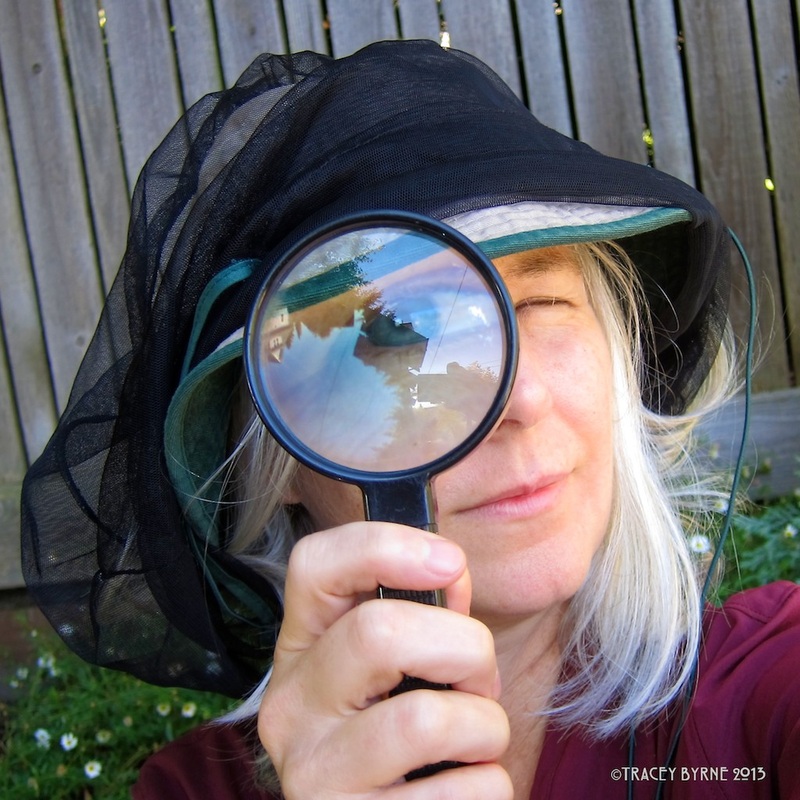Did you know that there are more than 4500 species of bees that live in the US and Canada, and worldwide over 20,000 species have been identified?
Many urban dwellers have not had enough experience with backyard pollinators to easily tell the difference between bees and wasps. For me, it is similar to how you can tell a cat from a dog, or robin from a spotted towhee–not only do they look different, but their movements and habits are unique.
You can often ID your backyard bugs by where you find them and what activity they are engaged in. You will find medium-sized golden-brown to black honeybees (photos right) busy flying back and forth between flowers, loading up on pollen and nectar, and zipping back to their hive. Bumblebees (photos left) are generally larger and fuzzier that the honeybee, many with black, orange, or yellow stripes. I consider bumblebees to be the “teddy-bear” of bees, and the most photogenic. Honeybees tend to be sleeker and less hairy than the bumblebees, but both carry pollen on their back legs.
Swarming honeybees are docile; they have nothing to protect–as they are merely scoping out the real estate in your neighborhood. The honeybee swarm consists of a healthy queen and upwards of about 10,000 of her workers. Call your local poison-free bee-guy to come collect them, and they will be relocated to a good home.
Bees: fuzzy, friendly, busy-but not aggressive, flight patterns are direct. Variations in size and color from golden brown to green to black, thick legs with pollen baskets, nectar gatherers; nest in ground, woodpiles, hives, attics, and walls.
Wasps and hornets: often aggressive, many carnivorous, striking yellow-black or white-black pattern that shouts CAUTION! Shiny, long thin legs (no fuzz or pollen basket-), wasp-waist, annoying at picnics, zig-zag flight pattern, paper nests found in trees or under eaves.
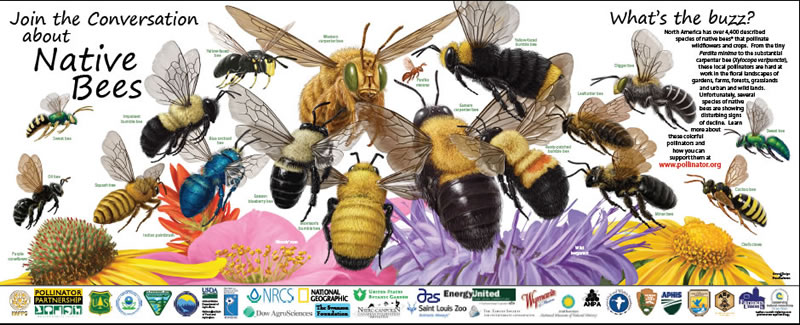
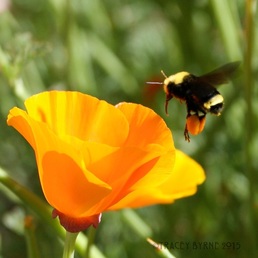
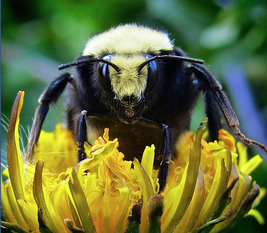
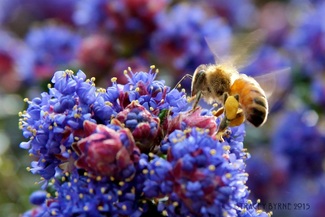
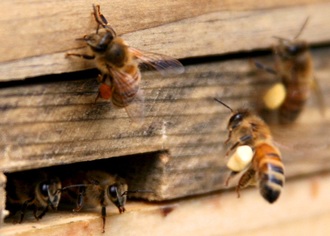
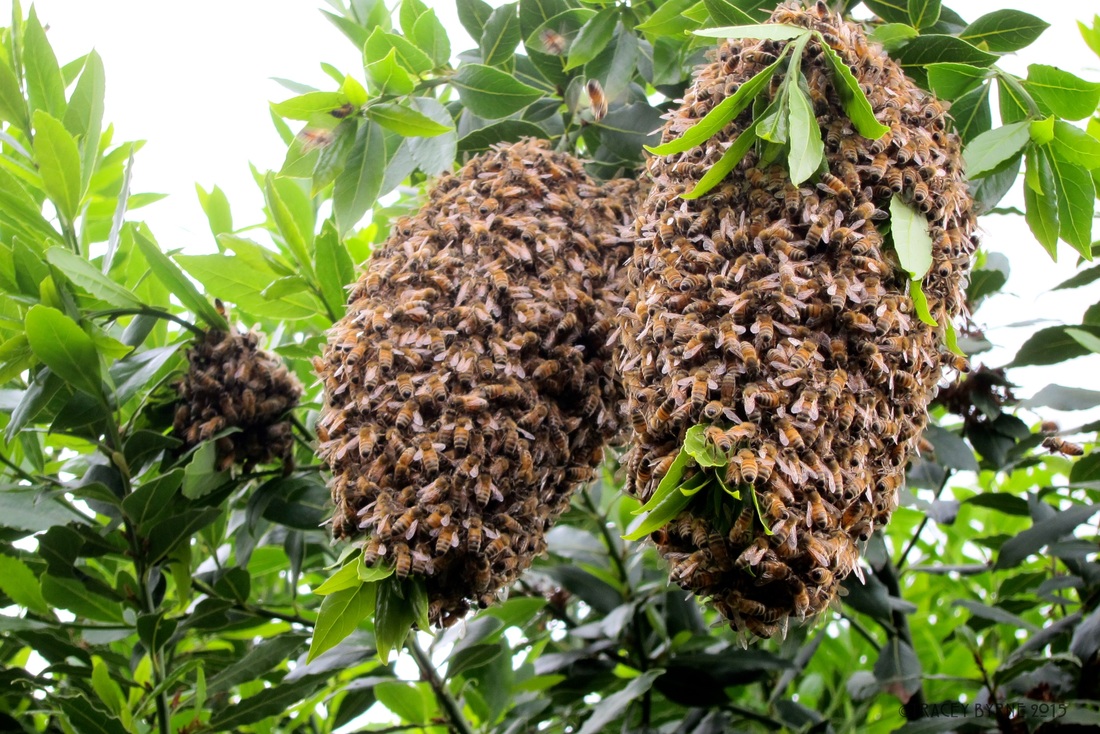
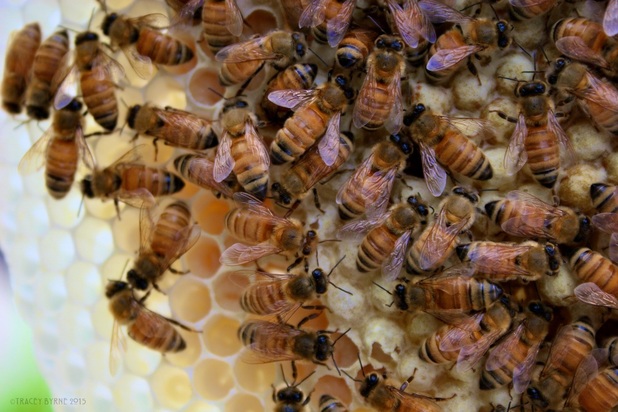
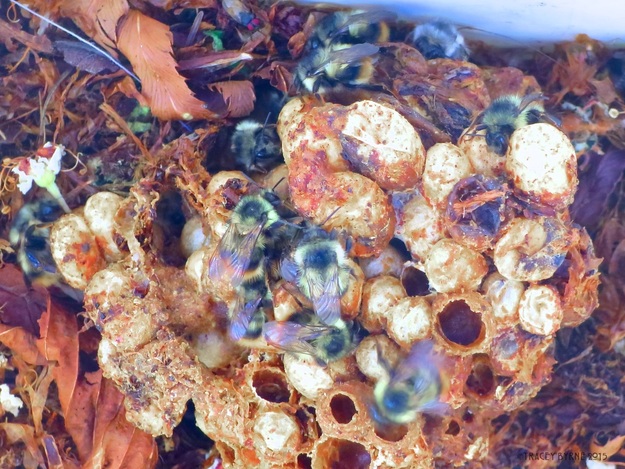

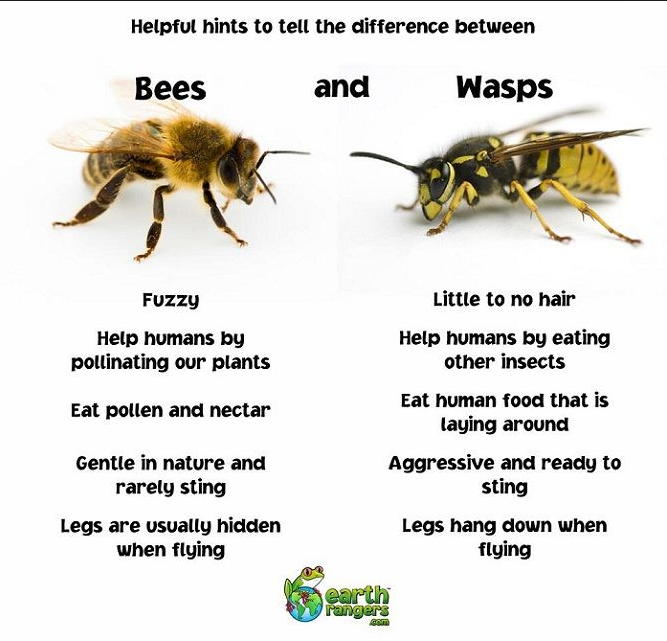
 RSS Feed
RSS Feed
